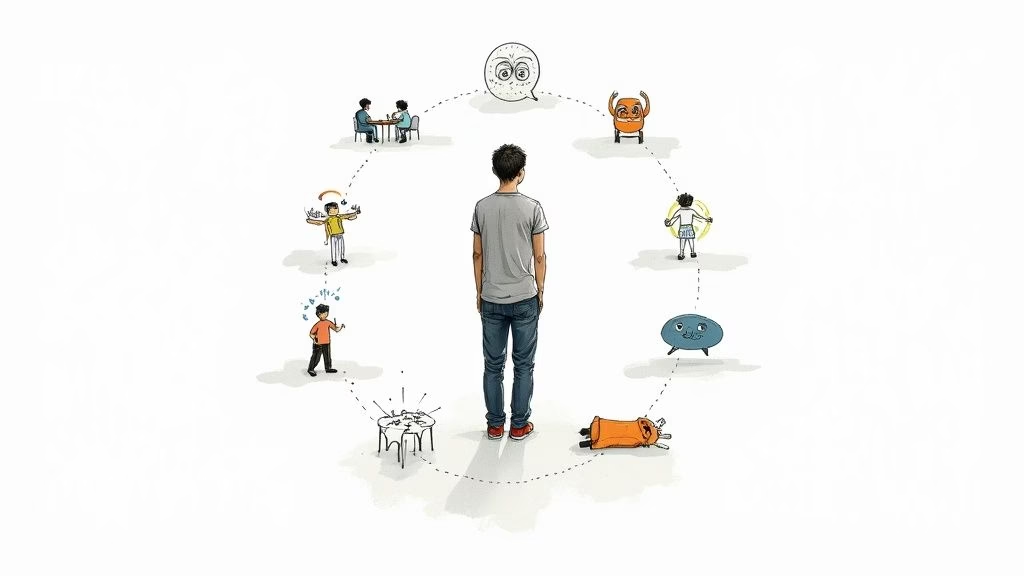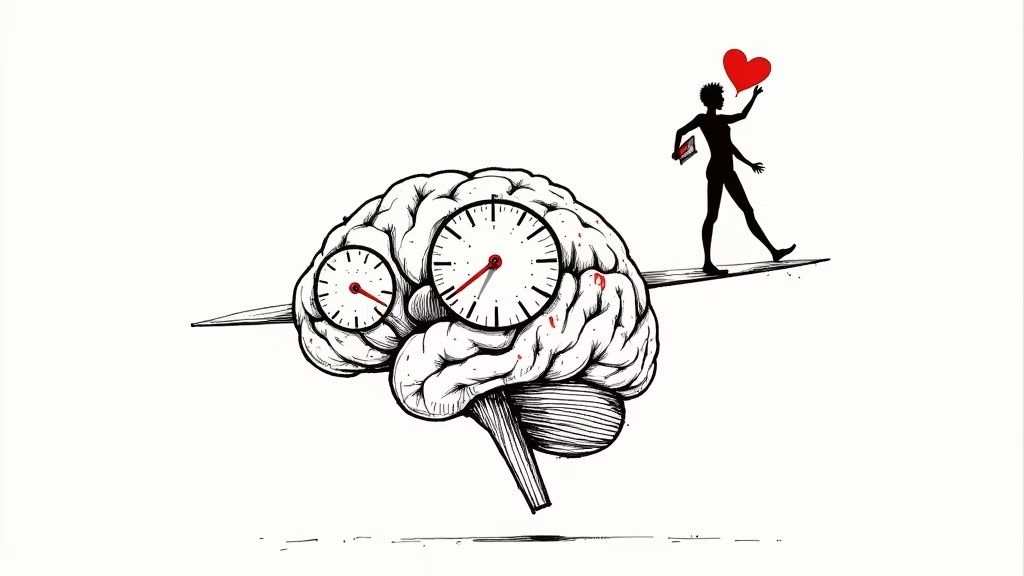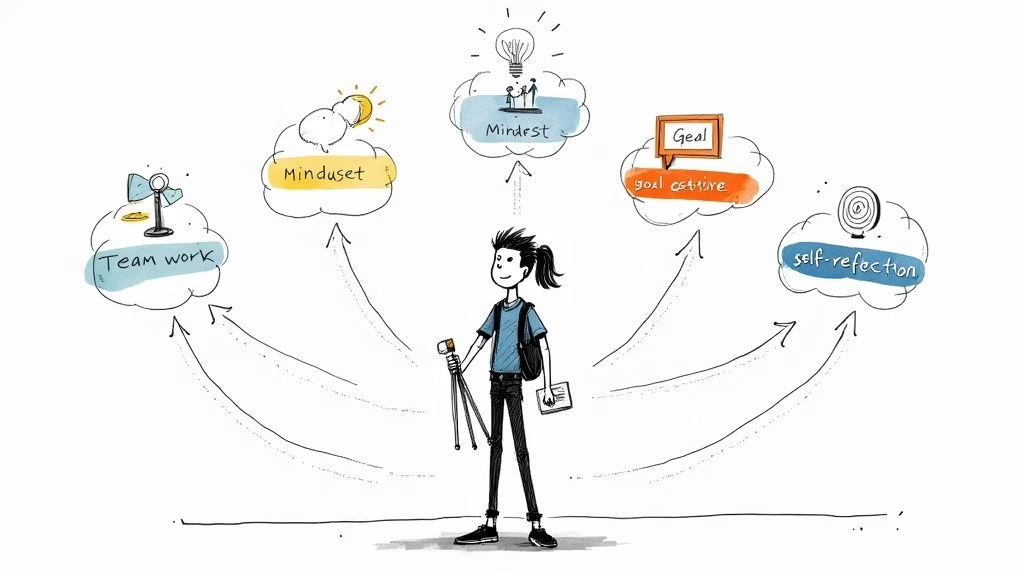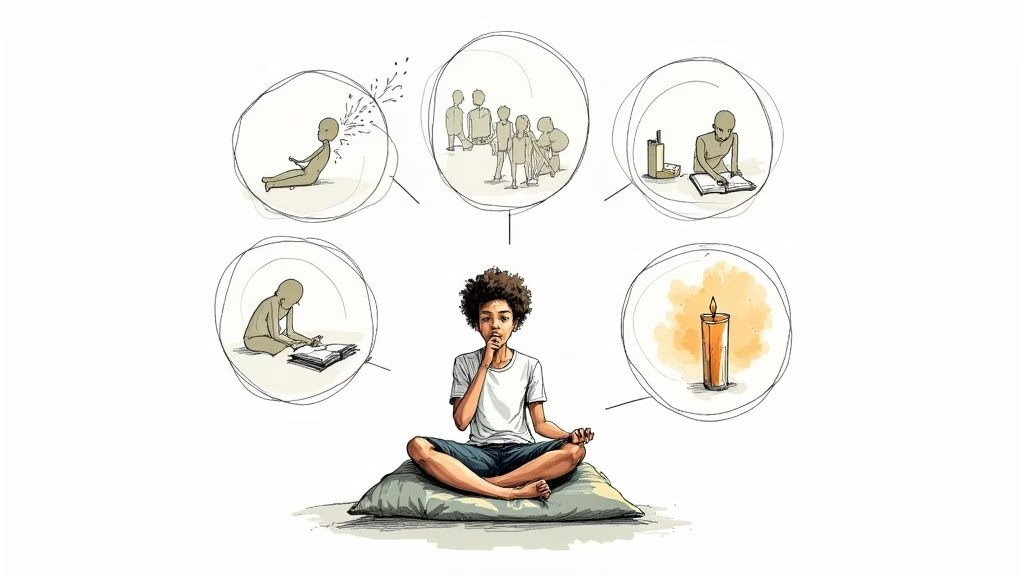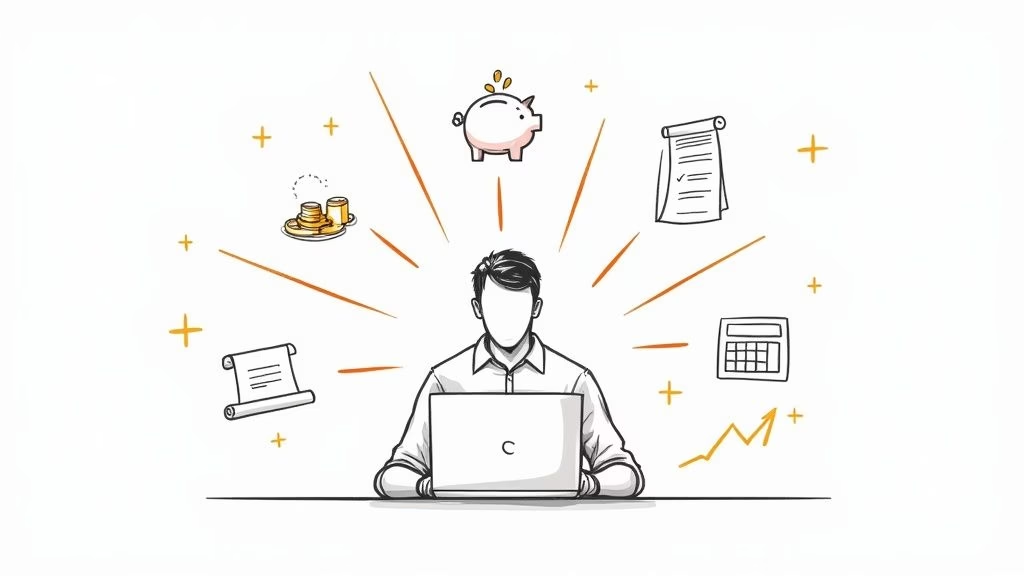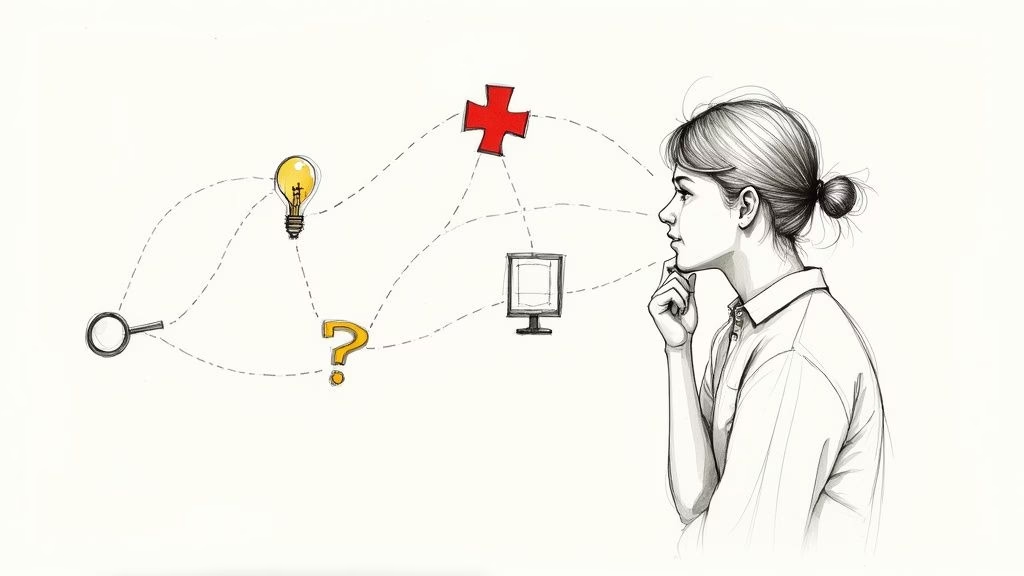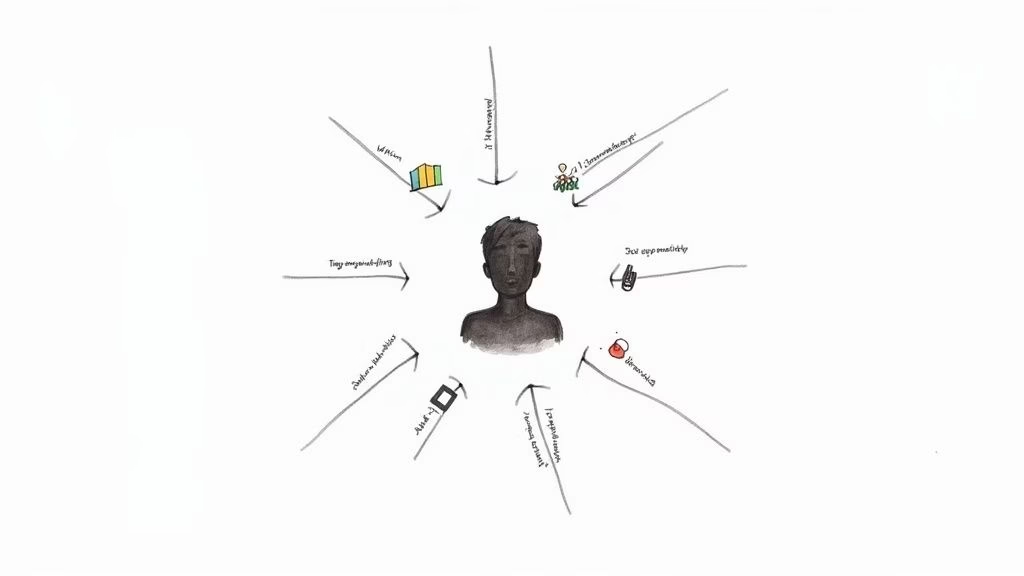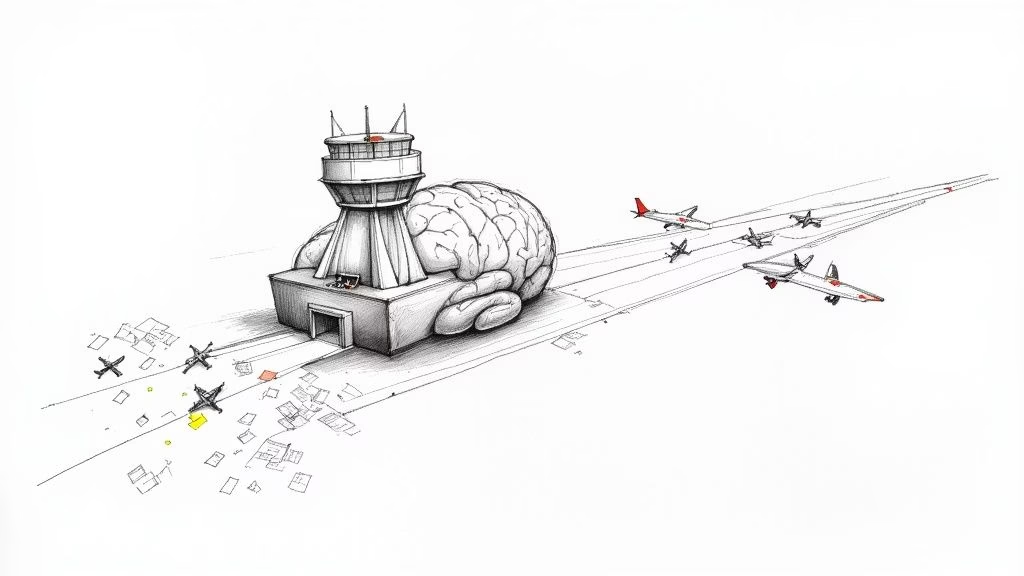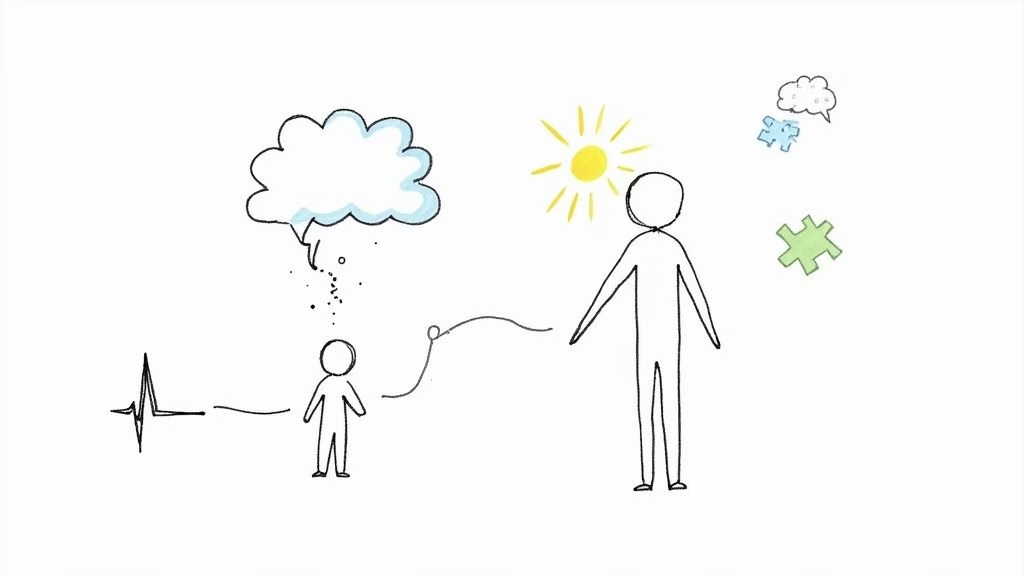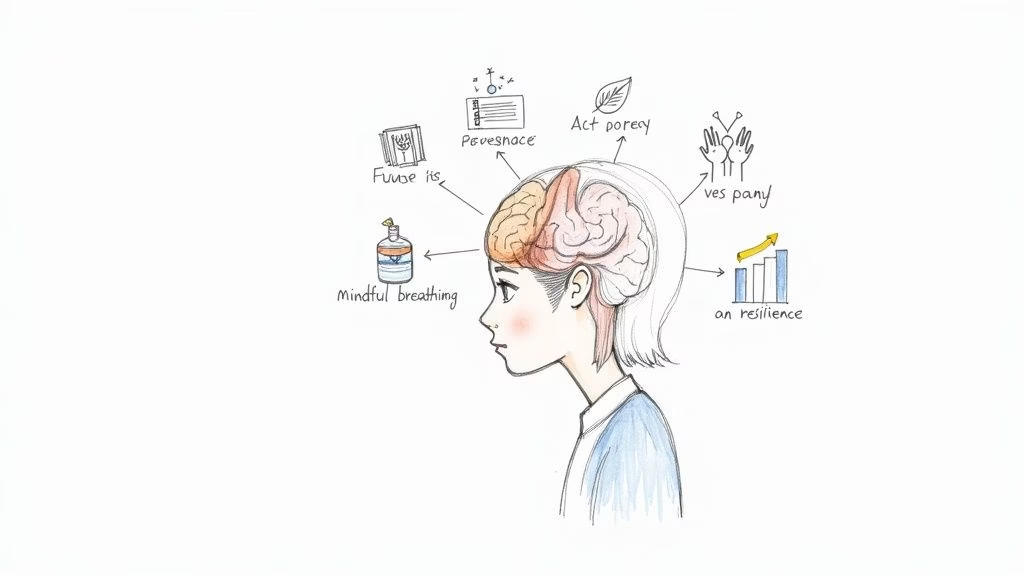In a world of constant notifications, demanding school schedules, and the pressure to succeed, time can feel like it's slipping away. For many teenagers, juggling homework, extracurriculars, a social life, and personal well-being often leads to a cycle of procrastination, stress, and burnout. Effective time management for teens isn't about cramming more into every hour; it's about taking control, reducing anxiety, and creating space for what truly matters.
This guide moves beyond generic advice to offer concrete, battle-tested strategies that empower you to manage your schedule, boost motivation, and build a healthy relationship with your responsibilities. We will explore specific techniques, from the structured Pomodoro Technique to the strategic Eisenhower Matrix, designed to fit a busy student's life.
By implementing these methods, you can improve academic performance and also significantly support your mental health, providing a foundation for success in college and beyond. This isn't just about managing a to-do list, it's about designing a life with purpose and confidence. Here are seven powerful systems to help you conquer your schedule and achieve your goals.
1. Time Blocking Method
Instead of juggling a chaotic to-do list, the Time Blocking Method gives every minute of your day a specific job. This popular time management for teens technique involves dividing your day into dedicated blocks of time for particular tasks. By assigning a start and end time to everything from homework to hanging out with friends, you create a visual roadmap for your day, which can significantly reduce procrastination and the anxiety of wondering what to do next.
This method, championed by productivity experts like Cal Newport, moves you from a passive "I hope I get this done" mindset to an active, intentional plan. It’s about being the architect of your own schedule, not just a passenger. For teens struggling with motivation, seeing a clear, structured plan for their school work can make overwhelming responsibilities feel manageable.
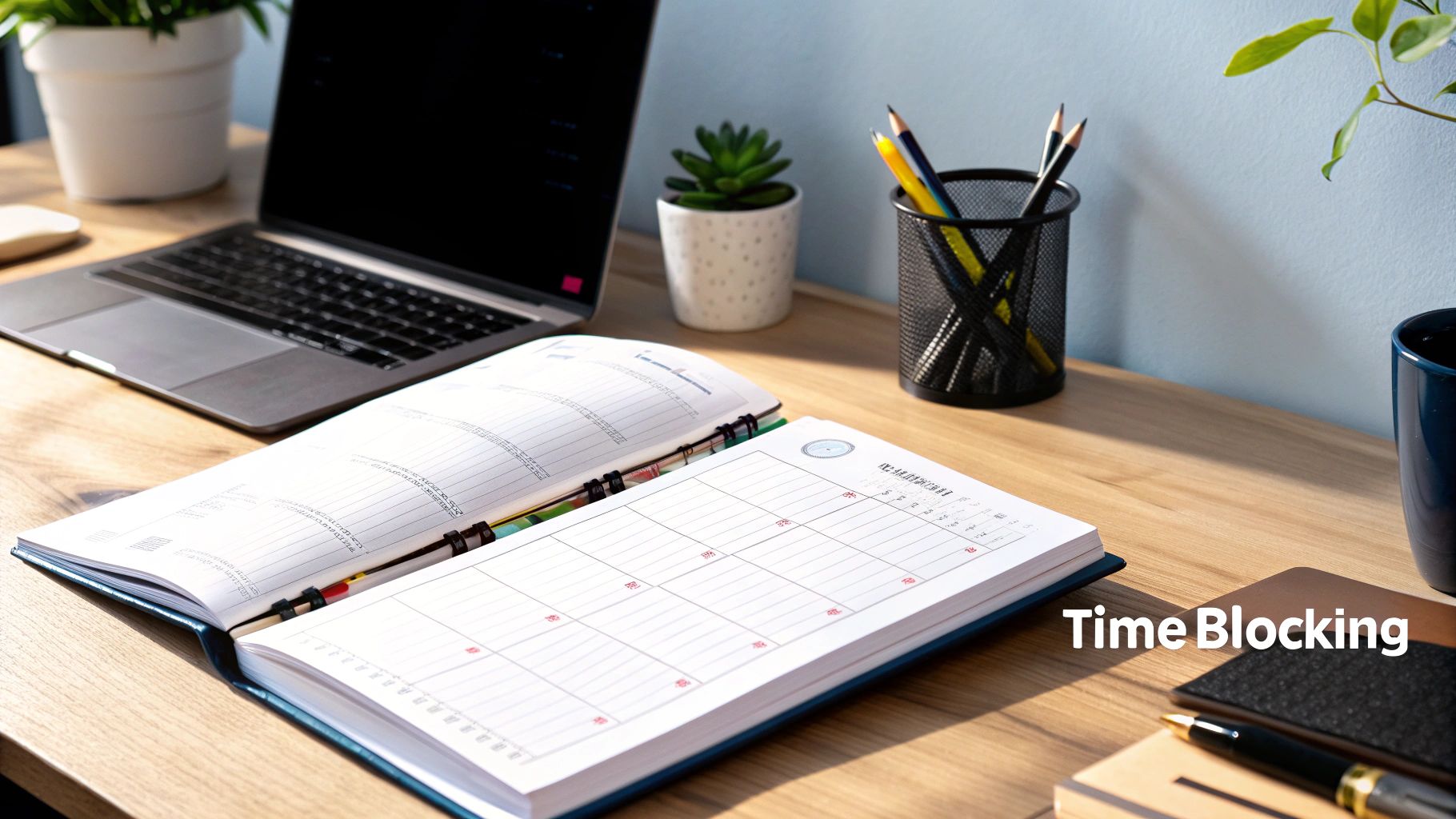
How to Implement Time Blocking
Getting started with time blocking is straightforward. You can use a digital calendar like Google Calendar, a physical planner, or even a simple notebook. The key is to schedule not only your obligations but also your free time.
- Block Your Non-Negotiables First: Start by scheduling fixed commitments like school, sports practice, or a part-time job.
- Schedule Deep Work: Allocate specific, uninterrupted blocks for focused tasks. For example, block out 4:30 PM to 6:00 PM for studying for your history final, or 7:00 PM to 8:00 PM for working on college applications.
- Don't Forget Breaks: Schedule downtime, meals, and even short 15-minute breaks between tasks. This helps prevent burnout and keeps your mental health a priority. Ignoring breaks is a common cause of academic fatigue and low motivation.
- Color-Code Your Life: Use different colors for different categories of activities. For instance, blue for academics, green for extracurriculars, yellow for social time, and red for personal care. This visual separation makes your schedule easy to understand at a glance.
Parenting Tip: Help your teen identify their most productive hours. Are they a morning person or a night owl? Encourage them to schedule their most demanding academic tasks during these peak energy times to align with their natural rhythm and combat procrastination. Review their time block schedule with them weekly, offering support and suggestions without being controlling. This collaborative approach builds trust and fosters independence.
2. The Pomodoro Technique
If a long study session feels intimidating, the Pomodoro Technique is your secret weapon. This popular time management for teens strategy breaks down work into short, focused sprints, making even the most daunting tasks feel achievable. You work in 25-minute, laser-focused intervals, called "pomodoros," separated by short 5-minute breaks. After four pomodoros, you reward yourself with a longer 15-30 minute break. This method combats mental fatigue and helps maintain high concentration levels.
Developed by Francesco Cirillo in the 1980s, this technique is not just about managing time; it's about managing your energy and attention. For teens who struggle with the constant lure of social media and other distractions, the 25-minute commitment is a low barrier to entry. It helps you build momentum and proves that you can focus intensely, which is a massive boost for motivation and self-confidence, especially when tackling difficult school assignments.

How to Implement The Pomodoro Technique
Using this method is simple, and you can start today with just a timer. The goal is to train your brain to focus in short bursts, which is a powerful skill for defeating procrastination.
- Choose a Single Task: Decide what you'll work on. For example, completing one section of your math homework or writing the introduction to your history essay.
- Set Your Timer for 25 Minutes: Work on the chosen task with zero interruptions. That means phone on silent and out of sight. If a distracting thought pops up, jot it down to handle later.
- Take a Short Break: When the timer rings, take a 5-minute break. It's crucial to get up, stretch, grab a glass of water, or look out the window. Avoid scrolling on your phone, as it doesn't allow your brain to truly rest.
- Repeat and Take a Longer Break: After completing four pomodoros, take a longer, more restorative break of 15-30 minutes. This is a great time to grab a healthy snack or listen to a few songs before diving into your next set of tasks. For teens battling procrastination, understanding how to start is often the biggest hurdle; you can learn more about how to stop procrastinating on andrewpetrillolifecoaching.com.
Parenting Tip: Help your teen make their breaks genuinely restorative. The temptation to use the 5-minute break to check social media is high, but this can derail focus. Suggest non-digital break activities like doing a few push-ups, petting the dog, or simply closing their eyes and breathing deeply. This practice not only improves focus but also supports mental health by providing moments of mindfulness throughout a stressful school day.
3. Eisenhower Matrix (Urgent-Important Grid)
It’s easy to get caught up in tasks that feel urgent but don't actually move you closer to your goals. The Eisenhower Matrix, named after U.S. President Dwight D. Eisenhower, is a powerful decision-making tool that helps you categorize tasks based on two simple criteria: urgency and importance. This framework is a game-changer for effective time management for teens, teaching you to prioritize what truly matters, not just what's making the most noise.
This method, popularized by Stephen Covey in The 7 Habits of Highly Effective People, combats the common tendency to react to immediate pressures rather than proactively working on significant long-term objectives. By sorting your to-do list into four distinct quadrants, you can clearly see where to focus your energy, what to schedule for later, what to delegate, and what to drop entirely. This clarity is crucial for reducing stress and making deliberate choices about your time.
This decision tree infographic illustrates the Eisenhower Matrix, guiding you through the process of sorting tasks by asking two key questions: "Is it urgent?" and "Is it important?"

By following the simple Yes/No path, the chart clearly assigns every potential task to one of four action categories, removing guesswork from your planning.
How to Implement the Eisenhower Matrix
Using the matrix is a straightforward exercise in critical thinking. Draw a four-quadrant grid on a piece of paper or a whiteboard and start sorting your tasks. The goal is to spend most of your time on what is important but not yet urgent.
- Do First (Urgent & Important): These are your immediate priorities with clear deadlines and consequences, like studying for a test that’s tomorrow or finishing a project due at midnight.
- Schedule (Important & Not Urgent): This is the quadrant for long-term success. Tasks here include working on college applications, exercising, learning a new skill, or studying for finals that are weeks away. This is where you should aim to focus most of your energy.
- Delegate (Urgent & Not Important): These are tasks that need to be done soon but don’t require your specific skills. For a teen, this could mean asking a sibling for help with a chore so you can study, or coordinating with group members on minor project details.
- Eliminate (Not Urgent & Not Important): This quadrant is for time-wasters. Think endless social media scrolling, binge-watching a show you're not invested in, or getting pulled into pointless online drama. Identifying and eliminating these frees up valuable time and mental energy.
Parenting Tip: Help your teen differentiate between genuine urgency and perceived pressure, especially from social dynamics. Role-play scenarios where a friend's "urgent" request conflicts with an "important" academic task. This builds their ability to set boundaries and prioritize their long-term well-being over short-term social pressures, a key skill for managing anxiety and staying focused on school and personal goals.
4. Getting Things Done (GTD) System
The Getting Things Done (GTD) system is a powerful framework for organizing your entire life, not just your homework. Created by productivity consultant David Allen, GTD is designed to get all your tasks, ideas, and commitments out of your head and into a trusted external system. This process of “mind like water” frees up mental space, reducing the stress and anxiety that comes from trying to remember everything.
For teens, this method is revolutionary because it tackles the overwhelming feeling that you have a million things to do. Instead of a messy mental to-do list, you create a clear, organized inventory of your commitments. This approach to time management for teens ensures nothing important, like a college application deadline or a group project, falls through the cracks, which directly combats the mental clutter that fuels procrastination.
How to Implement the GTD System
Getting started with GTD involves five core steps: Capture, Clarify, Organize, Reflect, and Engage. You can use a combination of a notebook, a planner, and digital apps like Todoist or Trello.
- Capture Everything: Use a simple tool, like a notebook or a notes app on your phone, to write down absolutely everything that has your attention. This includes homework assignments, chores, project ideas, and social plans. Don't filter or organize yet, just capture.
- Clarify and Organize: Regularly process what you’ve captured. For each item, ask: "Is it actionable?" If not, trash it, file it for reference, or put it on a "someday/maybe" list. If it is actionable, decide the very next physical action required.
- Break It Down: If a task takes more than one step, it's a "project." Create a project list to track these larger goals (e.g., "Complete History Paper"). Then, create separate "next action" lists organized by context, such as
@Home,@School, or@Computer. - Conduct a Weekly Review: This is the most crucial habit. Set aside time once a week, perhaps on Sunday evening, to review all your lists, clear your capture tools, and get a clear overview of the upcoming week. This weekly check-in is key to maintaining control and reducing stress.
Parenting Tip: Support your teen by helping them set up their initial GTD system. You can gift them a quality notebook or help them choose a user-friendly app. The goal is not to manage their lists for them but to help build the habit. Frame the "Weekly Review" as a positive, low-pressure check-in where they can plan their success, which builds both independence and essential life skills.
5. The 2-Minute Rule
The feeling of being swamped often doesn't come from big projects but from the death-by-a-thousand-cuts of tiny, unfinished tasks. The 2-Minute Rule offers a simple, powerful solution: if a task takes less than two minutes to complete, do it immediately. Instead of letting small to-dos pile up, you tackle them on the spot, preventing them from becoming a source of mental clutter and stress.
This principle, made popular by David Allen in his "Getting Things Done" system and further championed by James Clear in "Atomic Habits," is a game-changer for building momentum. For teens, this could mean immediately filing a handout instead of shoving it into a backpack, or putting dishes in the dishwasher right after a snack. It's a key strategy in effective time management for teens because it builds a habit of action over procrastination, clearing the way for more focused, deep work on bigger school priorities.
How to Implement The 2-Minute Rule
Adopting this rule is less about scheduling and more about shifting your mindset to act decisively on small tasks. The goal is to reduce the friction that leads to procrastination and keep your environment and mind clear.
- Identify Your 2-Minute Tasks: Think about the quick things you often put off. This could be replying to a quick email from a teacher, putting your sports gear away, tidying your desk, or sending a confirmation text.
- Act Immediately, Don’t Defer: The moment you identify a two-minute task, the rule is to do it right then and there. Don't add it to a list; just get it done. This prevents a simple action from becoming a lingering mental burden.
- Use Transition Times: Leverage the small gaps in your day. The few minutes after you get home from school or before you sit down for dinner are perfect for knocking out a few quick tasks.
- Batch Similar Tasks: If you have several two-minute tasks (like responding to three different text messages), you can group them together. Spend five or six minutes clearing them all at once to be even more efficient.
Parenting Tip: Frame the 2-Minute Rule as a tool for reducing stress, not just another chore. Help your teen see how quickly small actions can prevent a messy room or a cluttered backpack, which in turn reduces anxiety. You can model this behavior yourself by verbalizing it: "This will only take a minute, so I'll do it now." This approach promotes a proactive mindset and helps teens feel more in control of their environment and responsibilities.
6. Habit Stacking and Routine Building
Instead of relying on sheer willpower, Habit Stacking leverages existing daily routines to build new, productive behaviors. This powerful time management for teens technique involves linking a new desired habit to an already established one, creating a seamless chain of actions. By "stacking" a new task onto a habit you already do automatically, like brushing your teeth, you eliminate the mental effort of deciding when and how to act.
This concept, popularized by authors like James Clear in "Atomic Habits," is about making good habits the path of least resistance. It's not about a massive life overhaul; it's about small, incremental changes that compound over time. For teens overwhelmed by a long list of goals, this method reduces decision fatigue and transforms procrastination into automatic, productive momentum, making tasks like studying or school organization feel less like a chore.
How to Implement Habit Stacking
Getting started with habit stacking is simple and requires no special tools, just a bit of intentional planning. The key is to connect the new habit you want to form with a solid, existing habit that acts as a trigger.
- Identify Your Existing Habits: First, list the things you do every day without fail. Examples include waking up, eating breakfast, getting home from school, or charging your phone at night.
- Start Small: Choose a new habit that takes five minutes or less. Trying to stack a one-hour study session onto a two-minute habit is a recipe for failure. Instead, start with something like, "Review my class notes for five minutes."
- Use the Formula: Frame your new habit using this simple sentence: "After I [CURRENT HABIT], I will [NEW HABIT]." For example: "After I put my backpack down when I get home from school, I will immediately work on my math homework for 15 minutes."
- Be Patient and Consistent: It can take anywhere from a few weeks to a couple of months for a new habit to feel truly automatic. Don't get discouraged if you miss a day; just get back on track the next. Focus on building one habit stack at a time before adding another.
Parenting Tip: Help your teen identify reliable "trigger" habits in their day and brainstorm small, beneficial habits to stack onto them. The goal is to build momentum, not perfection. Frame it as an experiment in efficiency, which can reduce the pressure to succeed immediately. By setting up your teen's environment for success, you make it easier for these positive habits to stick and grow, boosting their confidence and independence.
7. Energy Management and Chronotype Awareness
Instead of treating every hour of the day as equal, this strategy focuses on aligning your most demanding tasks with your natural energy levels. Energy Management is a powerful time management for teens technique that involves identifying your "chronotype," or your body's natural tendency to sleep and be active at certain times. By understanding when you are naturally most alert and focused, you can schedule your hardest school work during these peak periods, working with your biology instead of fighting it.
This approach, highlighted by experts like sleep specialist Dr. Michael Breus, recognizes that adolescent circadian rhythms often shift, making many teens natural "night owls." Rather than forcing yourself to tackle complex homework when you feel groggy, this method empowers you to use your energy wisely. It’s about managing your energy, not just your time, which can dramatically boost productivity and reduce the stress of procrastination.
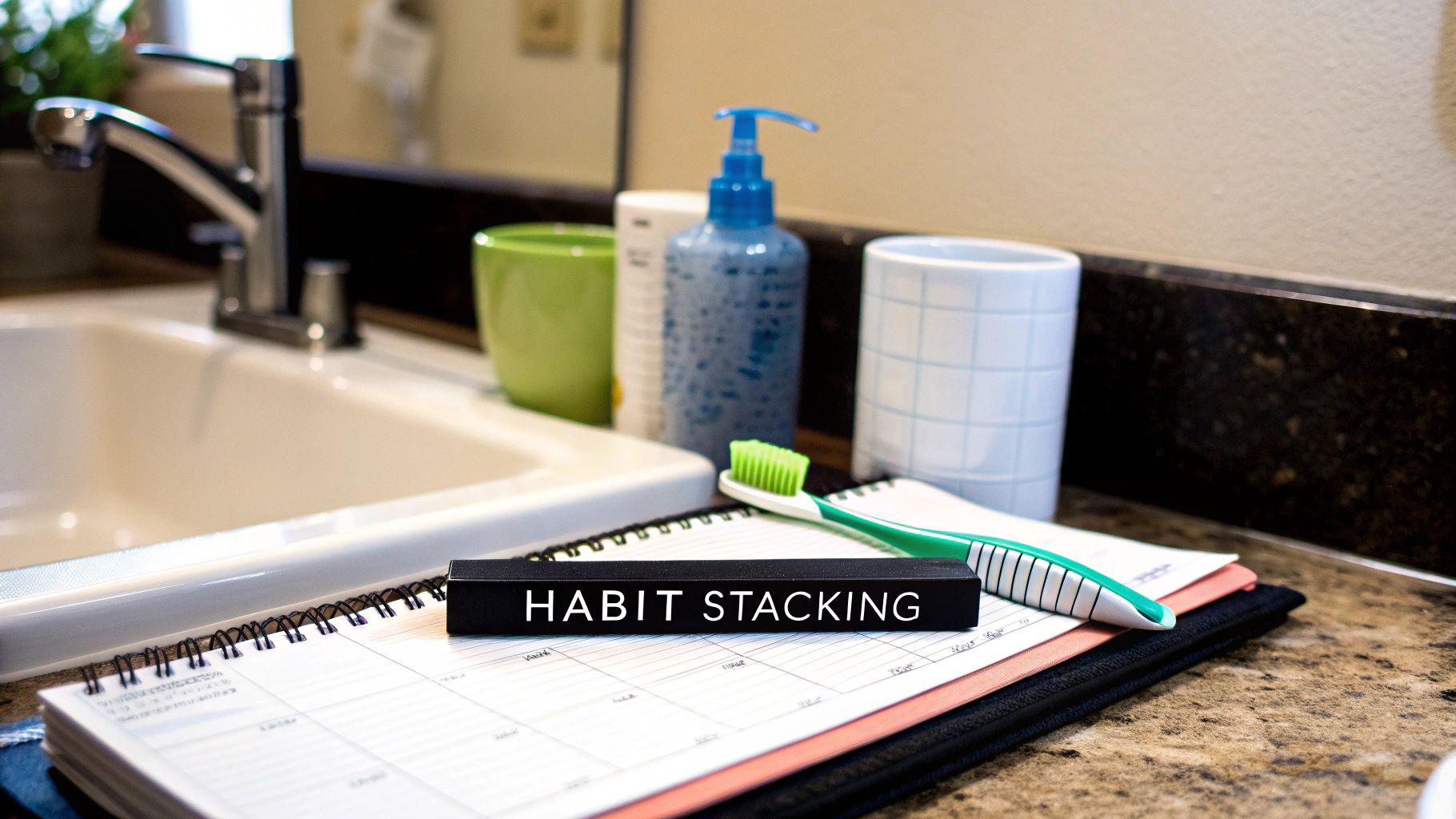
How to Implement Energy Management
Discovering and working with your energy patterns is a game-changer for academic performance and mental well-being. This isn't about finding more hours in the day; it's about making your most productive hours count.
- Track Your Energy Levels: For one week, use a simple notebook or a note-taking app to rate your energy, focus, and motivation on a scale of 1-10 every hour or two. You'll quickly see a pattern emerge, revealing your personal peak and low-energy times.
- Protect Your Peak Hours: Once you identify your high-energy window, guard that time fiercely. Schedule your most challenging tasks, like studying for a physics exam or writing a critical essay, during this period. For example, a night owl might schedule creative projects for 8:00 PM to 10:00 PM.
- Use Low-Energy Periods for Simple Tasks: Assign routine, low-effort activities to your energy slumps. This is the perfect time for organizing your backpack, tidying your room, responding to simple emails, or doing light reading.
- Prioritize a Consistent Sleep Schedule: A regular sleep-wake cycle is fundamental to regulating your energy. Understanding the connection between sleep and mental health for teens can provide extra motivation to make sleep a priority, which directly combats academic fatigue.
Parenting Tip: Help your teen accept their natural chronotype without judgment. If they are a night owl, work with them to structure an evening routine that supports focused academic work while still ensuring adequate sleep. Encourage them to notice how nutrition and exercise impact their energy, suggesting they plan meals and workouts to sustain their focus during key study blocks. This supportive approach helps them build self-awareness and take ownership of their productivity.
7 Strategies Time Management Comparison
| Method | Implementation Complexity | Resource Requirements | Expected Outcomes | Ideal Use Cases | Key Advantages |
|---|---|---|---|---|---|
| Time Blocking Method | Moderate; requires consistent planning | Calendar or planner, time for weekly adjustments | Structured day, improved focus, punctuality | Teens needing structured schedules and balance | Reduces decision fatigue, improves reliability |
| The Pomodoro Technique | Low; easy to start and maintain | Timer (physical or app) | Enhanced focus, manageable work segments | Tasks needing sustained concentration e.g. studying | Prevents mental fatigue, provides accomplishment |
| Eisenhower Matrix (Urgent-Important Grid) | Moderate; needs honest self-assessment | Task list and prioritization tool | Clear priorities, reduced stress | Teens struggling with prioritization | Clarifies priorities, prevents procrastination |
| Getting Things Done (GTD) System | High; comprehensive setup and maintenance | Capture tools, regular weekly reviews | Reduced mental stress, organized tasks | Teens with many responsibilities and projects | Scales well, develops organizational habits |
| The 2-Minute Rule | Very low; simple rule to apply | None or minimal (timer for tracking) | Reduced clutter, increased responsiveness | Handling small quick tasks efficiently | Creates momentum, prevents task buildup |
| Habit Stacking and Routine Building | Moderate; requires identifying triggers | Established habits and habit tracking tools | Automatic behaviors, reduced decision fatigue | Teens building consistent daily routines | Makes habits effortless, builds momentum |
| Energy Management and Chronotype Awareness | Moderate; requires self-awareness over time | Energy tracking, scheduling flexibility | Improved work quality aligned with energy | Teens needing to optimize productivity biologically | Works with biology, maximizes peak performance |
From Planning to Action: Supporting Your Teen's Journey
Navigating the demands of school, social life, and personal growth can feel overwhelming. This guide has equipped you with a diverse toolkit designed to transform chaos into clarity. We’ve explored concrete strategies, from the structured focus of the Pomodoro Technique and Time Blocking to the decision-making power of the Eisenhower Matrix. Each method offers a unique approach to managing your most valuable resource: your time.
The core lesson is that effective time management for teens is not about rigidly controlling every minute of the day. Instead, it’s about making conscious choices, understanding your personal energy cycles, and building sustainable habits. Techniques like the 2-Minute Rule and Habit Stacking are designed to build momentum, turning small, consistent actions into significant, long-term progress.
Turning Knowledge into Action
Mastering these skills is a journey of experimentation. The goal isn't perfection; it's progress. Here are your next steps:
- Choose Just One: Don't try to implement everything at once. Select one technique that resonated with you the most, whether it’s organizing tasks with the GTD method or identifying your peak energy times, and commit to trying it for one week.
- Track and Reflect: At the end of the week, ask yourself: What worked? What felt difficult? Did I feel less stressed or more in control? This reflection is crucial for finding the right system for you.
- Parents as Partners: As a parent, your role is to be a coach, not a micromanager. Encourage your teen to experiment with these tools, celebrate their efforts, and create a safe space to discuss challenges without judgment. Your support transforms this from a chore into a collaborative effort in building life skills.
The Link Between Time Management, Motivation, and Mental Health
It's vital to recognize that chronic procrastination and a lack of motivation are often more than just "bad habits." They can be symptoms of underlying stress, anxiety, or even depression. Research from institutions like the National Institute of Mental Health (NIMH) consistently shows that developing coping mechanisms and building resilience are critical during the teenage years.
If your teen tries these strategies but continues to feel stuck, overwhelmed, or unmotivated, it may signal a need for more personalized support. Addressing these root causes is the key to unlocking their potential. By tackling the “why” behind procrastination, we can empower teens to build not just better schedules, but also greater confidence and well-being. This proactive approach lays a strong foundation for success in college, careers, and life.
Is your teen struggling to turn these plans into action? If you're looking for expert guidance to help them overcome procrastination and build lasting motivation, consider the specialized programs at Andrew Petrillo Life Coaching. Andrew provides teens with the personalized strategies and accountability they need to thrive academically and personally.





